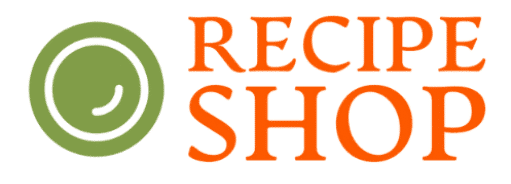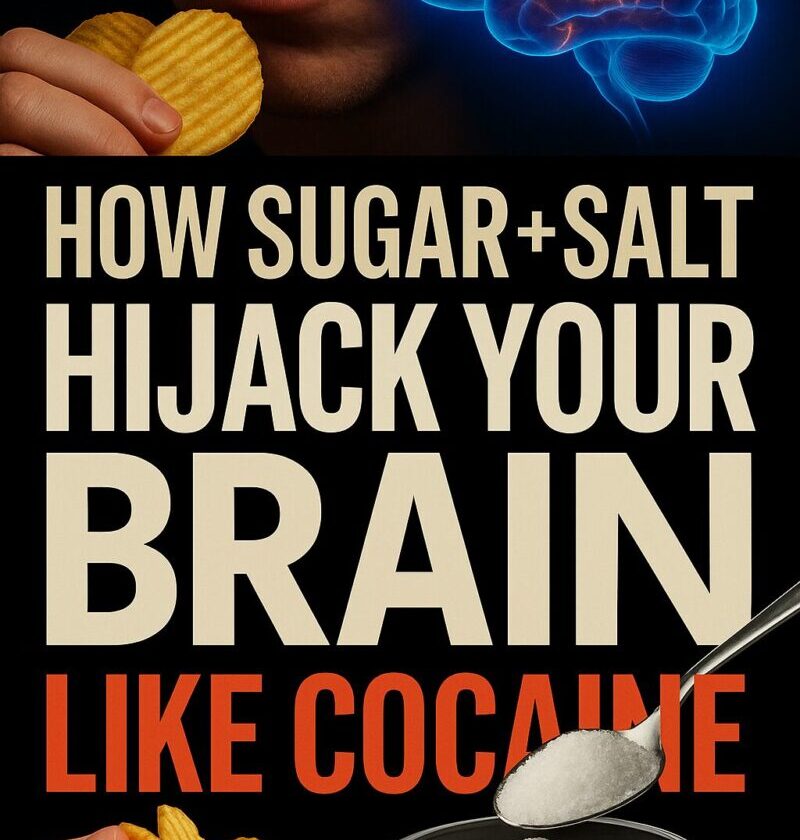And Why the Food Industry Doesn’t Want You to Know
Introduction: The Perfect Chemical Storm — In Your Pantry
You’re not weak.
You’re not lazy.
You’re being hijacked — by your own brain.
Every time you reach for that bag of chips or that cookie, there’s a biochemical war happening behind the scenes — and the food industry is winning.
👉 The combination of sugar + salt is one of the most powerful addictive food triggers ever engineered — and it lights up your brain’s reward circuits in the same way as hard drugs like cocaine.
In fact, modern neuroscience now shows that ultra-processed foods create patterns of addiction and compulsion that mirror drug dependence — complete with tolerance, withdrawal, and binging cycles.
Here’s how it happens — and how to break free.
Section 1: The Neuroscience of Craving
Your brain has a reward center — the mesolimbic dopamine system.
Its job? Reinforce behaviors that help you survive:
👉 Eating
👉 Drinking
👉 Sex
👉 Social connection
When you eat something hyper-palatable — meaning a food engineered to taste unnaturally good — this system floods with dopamine, your “feel-good” chemical.
Here’s the catch:
- Natural whole foods trigger a moderate, balanced dopamine release.
- Ultra-processed foods — especially the sugar + salt combo — create a superstimulus → unnatural dopamine surges → hijack the system.
The “Bliss Point”: Food Engineering’s Dark Secret
Food scientists literally design processed foods to hit your bliss point — the exact ratio of salt + sugar + fat that triggers maximum pleasure.
- Salt enhances flavor and masks bitterness.
- Sugar hits sweet receptors and drives dopamine release.
- Combined, they create a feedback loop of compulsive eating.
A 2013 study published in The American Journal of Clinical Nutrition found that ultra-processed foods with sugar + salt combinations activated brain areas linked to drug addiction, including:
- Nucleus accumbens (reward/motivation)
- Amygdala (emotion)
- Prefrontal cortex (decision-making)
👉 In other words:
You aren’t choosing the food anymore — the food is choosing you.
Section 2: Why Sugar + Salt Together Are More Addictive Than Either Alone
Salt alone: stimulates thirst, enhances flavor.
Sugar alone: triggers sweet receptors, dopamine surge.
Together → synergistic addiction loop:
- Salt stimulates dopamine release and increases palatability.
- Sugar triggers hedonic eating — eating for pleasure, not hunger.
- The combined taste keeps you eating past satiety (you stop noticing fullness).
- Repeated exposure → dopamine receptor downregulation → you need MORE to get the same pleasure.
A vicious cycle:
- More cravings.
- More binging.
- More tolerance.
- More damage to your brain’s ability to regulate appetite.
Sound familiar?
This is exactly how cocaine and other addictive drugs work:
- Trigger dopamine surges.
- Desensitize dopamine receptors.
- Drive compulsive seeking of the substance.
Section 3: The Evidence Is Mounting
🔍 Study 1: Neuroscience & Biobehavioral Reviews (2018)
Found that sugar can produce bingeing, craving, withdrawal, and cross-sensitization with drugs of abuse in animal models.
🔍 Study 2: Frontiers in Psychiatry (2019)
Ultra-processed foods high in refined carbs + sodium + fat activate the same neural pathways as substance use disorders — and show addictive behaviors in humans.
🔍 Study 3: Yale University (2021)
Functional MRI studies show that ultra-processed food cues light up brain areas linked to drug craving and compulsive use, especially when salt + sugar are combined.
👉 Summary: Your brain does NOT distinguish between the craving for a bag of chips and the craving for cocaine — on a neural level, it looks frighteningly similar.
Section 4: The Real Cost — How This Affects Your Body and Mind
Brain:
- Impaired dopamine signaling → less motivation, more fatigue.
- Increased risk of depression and anxiety.
- Reduced executive function → harder to control behavior.
Body:
- Increased insulin resistance.
- Chronic inflammation → linked to heart disease, cancer, neurodegeneration.
- Accelerated aging of the brain → reduced neuroplasticity.
Behavior:
- Compulsive eating even when full.
- Loss of control over food choices.
- Tolerance → need higher doses to feel satisfied.
Section 5: The Food Industry’s Playbook
👉 This isn’t an accident.
👉 This is engineered addiction.
- Cereal companies add salt to “balance” sugar and enhance cravings.
- Snack foods are optimized for the sugar-salt-fat triad.
- Fast food chains use sodium-heavy sauces combined with sugar-heavy drinks → maximum dopamine hits.
Bottom line: They know exactly what they are doing — and they’re targeting your biology.
Section 6: How to Break Free — Practical Steps
1️⃣ Awareness
- Read labels. Anything with more than 200mg sodium + added sugar → potential dopamine bomb.
2️⃣ Reset your palate
- Cut out ultra-processed foods for 10–14 days → your dopamine system begins to normalize.
3️⃣ Use natural flavor hacks
- Acid (lemon, vinegar)
- Herbs (rosemary, basil, mint)
- Umami (miso, mushrooms, nutritional yeast)
- Spices (cinnamon, turmeric, ginger)
4️⃣ Support your dopamine naturally
- Exercise.
- Sleep.
- Whole-food nutrition.
- Social connection.
👉 These behaviors boost dopamine without addiction.
Conclusion: You’re Not Broken — The System Is Rigged
If you’ve struggled with food cravings, binging, or “weak willpower” — stop blaming yourself.
The sugar + salt combo in processed foods is a deliberate hijack of your brain’s reward system — designed to make you eat more, buy more, and crave more.
But you CAN break the cycle — and once you do, the change is profound:
- More energy.
- Better mood.
- Better focus.
- Healthier body.
- A brain that works for you, not against you.
CTA:
👉 If you want to make this shift easy — without giving up flavor — that’s what we built Recipe Shop for.
Low-sodium, low-sugar, high-flavor recipes that actually support your brain, your body, and your future.
Start your free trial → [https://www.recipeshop.net]

